Hartosh Bal and the Butcher of Punjab
Kanwar Pal Singh Gill held the highest ranking police post in an Indian state as the Director General of Police (DGP) in Punjab from 1988 till 1995. He was brought in specifically to violently crush militant Sikh resistance that the Indian state deemed a terrorist insurrection. Sikhs fought an armed conflict with the Indian state principally between 1984 and 1995. The ‘Punjab insurgency’ as it has come to be known, was a decade long civil war with Sikh insurgents declaring their ultimate goal as the separation of East Punjab from India and to form a sovereign ‘Khalistan’.
“Operation Rakshak ("Protector") II, the counterinsurgency operation that ultimately crushed most of the militant groups by mid-1993, represented the most extreme example of a policy in which the end appeared to justify any and all means, including torture and murder. It was a policy that had been long advocated by senior police officials, in particular Director General of Police K.P.S. Gill, who has had overall authority for counterinsurgency operations. The goal of Operation Rakshak II was to eliminate, not merely arrest, the militant Sikh leadership. Gill also expanded a bounty system of rewards for police who killed known militants -- a practice that encouraged the police to resort to extrajudicial executions and disappearances.”
Dead Silence: The Legacy of Human Rights Abuses in Punjab. Human Rights Watch, Asia Staff, Patricia Gossman, 1994
While we are used to Indian nationalists, particularly those on the ‘Right wing’, praising KPS Gill for his murderous counter-insurgency methods, it is unheard of for a political editor of a magazine that prides itself on speaking truth to power, “uncompromising” on human rights, to staunchly defend Gill’s methods as “strategic brilliance”. Although Bal accepts that he could never be unbiased towards Gill because Gill is his ‘mama’, or maternal uncle, the fact that Bal celebrates this controversial former ‘Director General of Police’ as a hero should be troubling for those standing against mass atrocities which underpin state oppression.
To my knowledge during his time at the Caravan, Bal has never mentioned his personal connection and opinion regarding KPS Gill in any of his pieces. This is peculiar given Bal writes regularly about Panjab and its politics.
On the event of KPS Gill’s demise on 26 May 2017, Bal was perhaps compelled, to take a more public stance leading the eulogies at Gill’s memorial, and in a written piece published by Scroll (interestingly not through the Caravan), in which he made a concerted effort to try and paint a picture of his uncle as a defender of democracy.
“Liberal democracy survives in Panjab today because kps ensures that it does”.
Bal’s article rearticulates the state sanctioned violence of Gill by once again silencing the thousands who suffered at the hands of Gill. There are two main troubling themes throughout the piece by Bal in Scroll. One is an acknowledged bias toward Gill that develops into whitewash, with a cast iron refusal to voice the opposing and overwhelmingly comprehensive arguments against him, and the second is the violence towards Sikhs by erasing Sikh voices. In particular those that support the secession of Khalistan have their humanity and their agency stripped away from them, as not being able “to think for themselves”.
Lies, Damn Lies and Statistics, the Doubtfulness of ‘Data’
Bal’s argument centres on the idea that KPS Gill is “largely misunderstood”. Bal claims that the “brutal” moniker is undeserved, and that such allegations could be “endlessly debated with words” but Bal would rather “stay with the numbers”. In doing so, he attempts to swiftly take the reader away from the thousands of victims of State oppression, immediately, and just as violently, silence their voices. Bal pleads that we give credit based on the overall situation in the state, not from “isolated incidents or anecdotal reportage”. The “isolated incidents" he hints to, are the closest he comes to acknowledging mass human rights violations, torture, custodial rape, and summary executions of thousands of Sikhs under Gill’s supervision.
Quoting data from the Institute for Conflict Management, Bal says that during Gill’s stints as DGP there was an overall decline in “killings” (police murder), compared to Gill’s predecessor and successor. However Bal fails to mention that the institute he quotes from consists of a handful of people, and was founded and headed until his death, by none other than KPS Gill himself, while the current executive director is Ajai Sahni—KPS Gill’s son in law.
It is astonishing that as a veteran journalist, Bal does not, at the least, find it a conflict of interest to quote Gill himself on statistics of deaths during the State’s counter-insurgency violence, especially, when the main charge against Gill is that under his direction his officers abducted and killed thousands of Sikhs, and then disposed of the bodies secretly as “unidentified”. Surely Gill’s claims about how many people died and the distinction between civilian and militant, is questionable and cannot be relied upon.
Bal then ignores all the opinions including national and international human rights organisations such as Ensaaf, Human Rights Watch (HRW), REDRESS, and the Center for Human Rights and Global Justice, who in May 2006, issued a call to the Central Bureau of Investigation (CBI) for the investigation and prosecution of former police chief KPS Gill for torture and murder charges. Instead, he quotes Gill’s own articles in which Gill paints himself as police officer extraordinaire.
Hiding Systemic Injustices and Overlooking Sikh Shaheeds
Bal eventually moves on to deal the work of Jaswant Singh Khalra and the thousands of Sikhs who were abducted and killed by Indian security forces. The claim that KPS Gill enacted systemic violence against Sikhs dogged Gill for his whole career and following retirement, the remainder of his life. Indeed it can be argued that Gill’s actual legacy is in the failure of his spectacular campaign of inhuman repression that sought to dehumanise and erase the Sikh liberation struggle for Khalistan, which remains a potent challenge to the political integrity of india.
Inexplicably, instead of challenging Gill’s bold claims that “false encounters” (the police murder of suspected militants and sympathisers) did not take place*, Bal interrogates the 25,000 figure of disappearances often quoted by human rights groups, a figure which was extrapolated following the findings at three crematoriums in Amritsar, Majitha and Tarn Taran. Bal in defence of KPS Gill, claims that this is inaccurate because different parts of Panjab experienced different levels of violence, and hence it was not accurate to use figures at 3 crematoriums to calculate all the “disappearances” in Panjab.
Leaving these failures aside for a moment and the fact that Bal has yet to condemn the findings (that at the very least, 2059 Sikhs were murdered and cremated as “unidentified corpses”), the more objectionable omission is the refusal to mention Shaheed Bhai Jaswant Singh Khalra. It appears the reason why Bal prefers to present and argue numbers, is that when faced with real examples, the sordid truth about his uncle comes to the surface.
Jaswant Singh Khalra was a human rights activist who upon chasing up leads about missing Sikhs, discovered the grisly secret of how Indian security forces were murdering and disposing thousands of Sikhs ‘unofficially’. It was Khalra who made the discovery at the 3 crematoriums.
Continuing in bias, rather than question why the State at this point did not call for an immediate investigation into the discovery of thousands of murdered and illegally cremated bodies, Bal proceeds to question the veracity of these figures, and why a small sample was used to generate an estimate. This gives the false impression that the larger figure of 25,000 across Panjab is a “fabrication”. Bal misleads the reader, as he knows full well, that the reason a full investigation was not possible across Panjab, was that KPS Gill ordered and personally oversaw the abduction, torture and murder of Jaswant Singh Khalra. Khalra had announced during a press conference that he was not going to rest until he investigated the full extent of the killings across Panjab. He had been warned and threatened to desist with his investigations, and whilst being fully aware of the risks of becoming a statistic himself, he continued valiantly. He accepted his fate and told the people of Panjab, to hold the Chief Minister Beant Singh and DGP KP Gill responsible for his impending disappearance and death.
The impunity Indian security forces enjoy was once again demonstrated when Khalra was abducted in broad daylight from his home on the 6 September 1995, under the direct orders of KPS Gill, who he referred to as the ‘Chief of Oppression’. Khalra was detained, tortured, and murdered by the police, his martyred body dumped in a river. The details of his death and Gill’s involvement only came to light due to a station officer’s miraculous attack of conscience. Special Police Officer (SPO) Kuldeep Singh, who was present when Khalra was detained, came forward and confessed his involvement in the custodial murder. Even with such evidence, it took a decade for 6 low level police officers to be convicted, during which time the senior officers who were responsible, DSP Ashok Kumar and SSP Ajit Sandhu had died. Worse still, KPS Gill was completely immune from prosecution and not even questioned by authorities about his involvement despite testimony of his involvement.
It is an insult to the sacrifice of brave Panjab human rights activists such as Khalra, that Bal writes off their just cause as “petty human rights movements”. Bal who reminds us at every opportunity that he worked in Panjab as a journalist, should have more respect for those who paid the highest price for exposing the brutality of the Panjab Police:
“Those who attempted to investigate the abuses were also targeted. Jaspal Singh, the president of the Ropar district branch of the Punjab Human Rights Organization (PHRO), was detained by the Punjab Police on August 16, 1993. He was released on September 1, 1993, only after his case received widespread international and domestic publicity. Other human rights activists have been targeted since 1991, including Ram Singh Biling, district secretary with PHRO, who disappeared after he was detained on January 3, 1992; Jagwinder Singh, a lawyer who disappeared after he was detained on September 25, 1992; Justice Ajit Singh Bains, also with PHRO, who was detained for four months in 1992 and Malwinder Singh Malli, another activist with PHRO who was detained for seven months in 1991.”
Human Rights Watch (1993)
Bal does not acknowledge this repression, although they feature in international reports, and thus doesn’t ask the obvious question that if mass “disappearances” were not being carried out, as claimed by KPS Gill, why did the Panjab Police target and murder journalists and human rights activists, who were investigating these so-called disappearances?
Refuting Human Rights Organisations
“The liberal mind is unwilling to believe that peace or liberal democracy needs force for the rule of law to establish at times” [sic].
Bal labours on to claim that respected International Human Rights organisations such as Human Rights Watch are partly responsible for the state killings of Sikhs in Panjab to suppress the Khalistan movement, because they term “terrorism” as “militancy” (a description Bal describes as “cringe-worthy”) and distort facts to build a false narrative. Gill is targeted, Bal stresses, not due to his brutality, but because he was most capable, and because he succeeded. Although he repeatedly refers to the allegation of brutality which Gill wore as a “badge of honour", he is careful not to actually delve into.
"Simply put, the facts in Punjab do not support the narrative built up by organisations such as the Human Rights Watch. For such organisations, Gill is a target not because he was the most brutal officer in charge (as the numbers suggest quite the opposite), but because he was the most capable, because he succeeded. They have done so to avoid facing up to the truth that a policy of healing hearts and minds in a state where terrorism never had the support of more than a tiny minority led to the worst bloodletting, a bloodletting in which the confusion they continue to propound by calling terrorism militancy, was culpable. The Khalistanis endorse this because nothing suits them more.”
‘Lessons not learnt: The Left and Right have distorted KPS Gill’s success against terrorism’, Hartosh Bal in Scroll 2017
The credit for “peace” (enforced silence) in Panjab Bal claims ought to go to Gill’s “strategic brilliance”, and that those who accuse him of succeeding through barbarity “do not know what they are talking about”. Bal doesn’t however want to discuss what it is they are talking about. Despite mountains of documents and reports, and a larger count of dismembered bodies, Bal conveniently sidesteps this whole issue.
The brutal approach the people of Panjab were subjected to—which Bal is desperate to forget—included:
Mass killings of those involved or associated with the Khalistan movement, including their family members.
Torture on a mass scale, used to instil fear and repress support for the Khalistan movement.
Mass custodial rape, and rape used as a weapon against Sikh fighters and civilians
Findings of organisations vilified by Bal
In 1994 Human Rights Watch produced a comprehensive report ‘Dead Silence: The Legacy of Human Rights Abuses in Punjab’, following a fact-finding mission to Punjab in October 1992.
“The price of the government's apparent success against the separatists is the legacy of these abuses: a corrupt and brutalized police force whose resort to murder and torture has been sanctioned by the state as an acceptable means of combatting political violence.”
“the fundamental purpose of torture appears to be to inflict severe physical and psychological pain in order to destroy the dignity and will of individuals and to repress potential support for political opponents by indiscriminately targeting members of certain political groups or social communities.”
Those interviewed include serving police officers:
“Once I became a police officer in Punjab, I realized that torture is used routinely. During my five years with the Punjab police, I estimate 4,000 to 5,000 were torture at my police station alone”
Another officer confirmed that this was not subordinate officers acting with a free reign, but rather this was policy, and incentivised:
“Torturers are selected on the basis of their mind setting: For example, one who shows a tendency. If he does not comply, he will be suspended or dismissed. Mostly, they do it drunk. Then, after they get accustomed to it, they do it sober. There is no extra pay, but he expects favors, like an out-of-turn promotion. An SI may become DSP in just a few months for torturing”
This was one of several victims of torture the researchers interviewed in Panjab:
“I was stripped naked and beaten many times. My legs were stretched apart and the iron roller was used on my legs. A wooden rod was placed behind my knees and my legs were pressed towards my buttocks. They brought in a young man who was badly tortured. "He has agreed to tell us about the militants," they said. "If you do not disclose anything, you will be shot and your body thrown into the canal."
When PHR's Dr. Iacopino examined A. in March 1994, he had striking physical evidence of the abuse he described. There were areas of marked atrophy (tissue loss) and fibrosis (scaring) of both left and right anterior thigh muscles, consistent with extensive muscle damage from the roller method of torture. There was a twelve centimetre surgical scar present in the right lateral chest wall where a large hematoma was said to have been removed and a two centimetre surgical scar in the left groin area. There was a bony deformity and callus formation present over the left shin, indicating a possible old fracture where the roller had been applied.
“The US State Department reported on the case of Kulwant Singh, a lawyer, who was killed along with his wife and child after all three were detained on January 25, 1993, by police from the Ropar police station. Chief Minister Beant Singh reportedly agreed to order an inquiry into the killings but backed down when confronted with police resistance.”
U.S. Department of State, Country Reports on Human Rights Practices for 1993, February 1994
In 2005, in response to the extradition of Sikh militant, Kulbir Singh Barapind, diplomatic cables published by Wiki Leaks report that the US were informed that in addition to Sikh militants themselves, their families and friends were tortured as a matter of policy:
“Editor Avinash Chopra stated that Barapind's relatives were tortured in 1988-89 as a matter of procedure, and that the police routinely tortured and/or killed terrorists' families and associates.”
Canonical ID:05NEWDELHI9513_a
According to Bal however Amnesty, HRW, US State Department, CDDP, MASR, etc either “do not know what they are talking about” or “distort what happened”. Instead Bal digs deeper into his dehumanisation of resisting Sikh bodies to provide cover for complaints of gross and widespread human rights abuses, by claiming that “Jatt Chittar de Yaar Hondai ne”, loosely translated: “Peasant Sikhs in Panjab are fond/lovers of being beaten”. This perverse and insensitive stereotype is a grotesque justification for mass human rights violations which encourages the use of brute force as a matter of policy.
Perpetuating Police Corruption and Violence
Bal has made no reference to any of the large number of senior police officers, who served under KPS Gill, who have been charged, convicted and sentenced for extortion, torture and murder.
Although Bal refers to Gill’s “strategic brilliance” there is no mention in either Bal’s article or speech of the infamous “Black Cats” championed by Gill. In terms of strategy, the Black Cats, secret paramilitary groups, were set up to carry out actions too heinous to be committed in police uniform, and had devastating effect in targeting the civilian supporters or political proponents of Khalistan:
“During the Punjab militancy of the 1980s-1990s, Additional Director General of Police (Administration) Mohammad Izhar Alam assembled a large, personal paramilitary force of approximately 150 men known as the "Black Cats" or "Alam Sena" ("Alam's Army")…The group had reach throughout the Punjab and is alleged to have had carte blanche in carrying out possibly thousands of staged encounters, according to Indian NGO and press reports. Gill publicly praised the group and said the Punjab police could not have functioned without them.”
Wiki Leaks Cable Canonical ID:05NEWDELHI9513_a
While Bal may not mention them, Black Cats and other brutal and illegal practices of Gill’s subordinates feature in international reports, and it is clear from the Wiki Leaks cables that international governments were fully aware.
While Gill enjoyed blanket immunity until his death, his protégés have come under increasing pressure from family members of victims, who have braved police excesses themselves. Despite an apathetic, often complicit attitude from the judiciary and long-term harassment from the police, these families have struggled for up to 3 decades in order to pursue the culprits in India’s infamously delayed and corrupt legal system.
Some of the Police officers, who were protected by Gill and received out of turn promotions to the highest echelons of the Panjab Police include:
Sumedh Saini, former DGP of Panjab Police: An arrest warrant has recently been issued for murder charges relating to the murder of Balwant Singh Multani in 1991. Two of his police officers at the time, and who were co-accused, have confessed that it was upon Saini’s orders that 28 year old Balwant, a junior engineer was picked up by the Chandigarh Police. Gursharan Kaur, a lawyer by profession, had also been detained with her husband and young child and has come forward as a witness in the case:
“The next day, on 12 December, we were taken to Sector 17 police station and there Multani was also present, in a very bad shape, having been subjected to brutal torture. I cannot even describe his state.” She said that on the night of 13 December, “Sumedh Saini came and he kicked Multani, and he and his men savagely tortured him. He was lying on the ground, unable to even stand. Multani was begging Saini to forgive him and there were wails and cries … in the verandah in the morning, he was lying in a very bad state… his eye was popped out and he was bleeding profusely”
The Caravan, May 2020
One of the police officers involved, Jagir Singh, confessed to his involvement and gave evidence against Saini. Jagir Singh confirmed that Saini had tasked the officers to fabricate false charges including the manipulated recovery of a pistol and falsifying records to show that he had escaped, even though Multani had already been killed in police custody.
Jagir’s statement further details that Saini had personally kicked Multani so violently while he was already incapacitated on the ground that he caused massive facial injuries including the rupturing of his eyeball out of the socket. Saini, former trusted lieutenant of KPS Gill, who protected his officers from prosecution while he was alive, then sat and directed the torture including the thrusting of a wooden staff up into Multani’s anus, causing massive internal injuries which ultimately led to his death in detention. Like thousands of others, the police claimed he escaped and then secretly disposed of his body.
This is only the tip of the iceberg. Ensaaf, a non profit organisation investigating the forced disappearances in Panjab, have uncovered evidence that links Saini to the illegal disappearances of at least 159 people. That number is increasing as investigations continue, with over 30 senior police officers implicated in a similar pattern of abduction and murder in hundreds of cases.
It is astonishing that Bal has very little if anything to say about the charges against Saini, and what they tell us about Gill’s legacy. If Bal honestly believed Gill and his trained successors were defenders of democracy, he would be outraged by the revelations. The truth is that he knows very well, as does everyone, hence the complicit silence.
In order to frame this perfect legacy of Gill, Bal doesn’t mention the assassination of Chief Minister Beant Singh at all. The assassination of the Chief Minister, who enjoyed the highest level of security in the country, was carried out by his own police officers.
After witnessing first hand what the police was being made to do by Gill and Beant Singh, Panjab Police Officers Balwant Singh Rajoana, and Dilawar Singh, made up their minds to stop the killings and made contact with Babbar Khalsa to help them.
While Dilawar Singh was killed in the explosion that took the Chief Minister’s life, Rajoana was arrested shortly after. He refused legal assistance and made a full and frank confession that he and his companions had taken the move in order to stop Beant Singh, who had given orders to the police and other agencies in Panjab to kill thousands of innocent Sikhs at the behest of Delhi (Central Government).
Bal and Gill, a tale of Heroization
“In our times that word hero can only be applied to one man, and he [Gill] is that man.” - KPS memorial speech by Hartosh Bal
Decades of investigations and reports into the extent of the mass abduction and killing of Sikhs in Panjab, in order to quell the Khalistan movement cannot be reproduced in this article. Neither should they be. Hartosh Bal is a veteran journalist who is fully aware of what has been happening.
This is why it is deplorable that Bal not only heralds Gill as a hero, but claims policy makers ought to learn lessons from him. In regards to torture, Bal claims that torture is widely practiced across India, thus “accusations” of torture during the Khalistan movement should be expected.
When Bal claims to stand against human rights abuses and accepts that torture is widespread in India he must then also be aware of the history and reality of how and why torture is employed by Indian Secuirty forces. Bal must also be aware of the internal and international condemnation of torture practiced by the Indian state.
When Bal makes the appalling justification that Sikhs enjoy beatings, an idea rooted in racist coloniser logic that non-white peoples can only be subdued through violence, he furthers the Otherisation of Sikh bodies in a manner consistent with India’s colonial moorings that underpin its treatment of dissenting minorities.
Hartosh Bal minimises, justifies, and erases State violence committed against Sikhs through his efforts to rehabilitate the public image of his uncle based on a selective depiction of Gill’s legacy. Bal demonstrates his awareness of the political reality of the Indian colonial project when he suggests that holding KPS Gill accountable would be to hold him to ‘higher standards’.
Given Bal’s reputation, and that of the Caravan, it is absurd for Bal to justify government sanctioned and rewarded genocide masked as ‘counter-insurgency’. After all that is the realm in which KPS Gill gained his monikers of “butcher”, “brutal”, and “Chief of Oppression”.
Bal has attempted to erase and avoid any discussion of Gill’s wrongdoings and its place within the suppression of minorities, particularly Sikh activists, in Punjab.
Through his use of poor statistical analyses, his refutation of Sikh activists and their work uncovering state sanctioned killings, and direct attacks on the work of human rights organisations, Bal perpetuates police corruption and impunity. By heroizing KPS Gill, Bal demonstrates a distinctive lack of integrity as well as a lack of reflection entirely unbefitting of a journalist.
It is absurd for Bal to hold Gill as a shining example of democracy, the rule of law and justice. A person responsible for the torture and killings of an inconceivable number of innocent Sikhs can be many things, but only a hero to the State that celebrates him as a “super cop”. The families who continue to stand against a pervasive fascist State which has protected and rewarded murderers, are the real heroes.
*Gill claimed repeatedly throughout his career and in retirement that false encounters did not take place, that he led the most humane counter insurgency operation in the world and that the thousands missing were “missing with the consent of their parents and relatives and their whereabouts were known to their families” - The Tribune, 19 January 1995






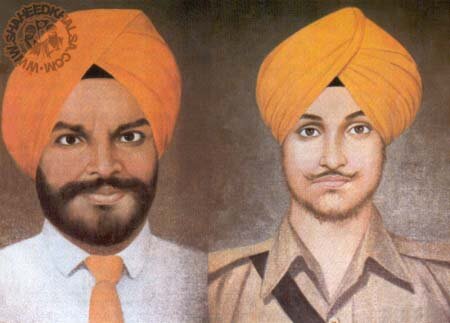


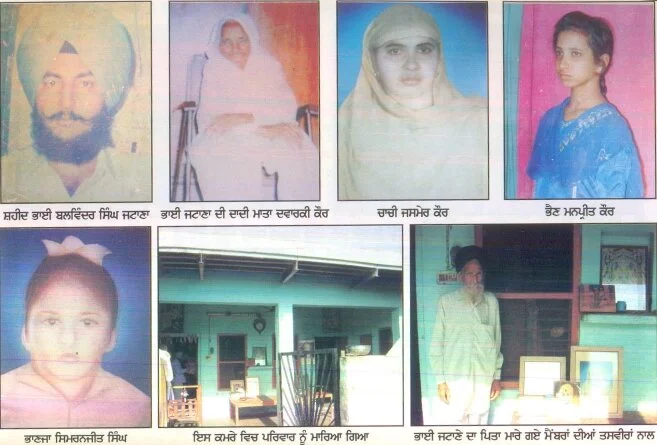

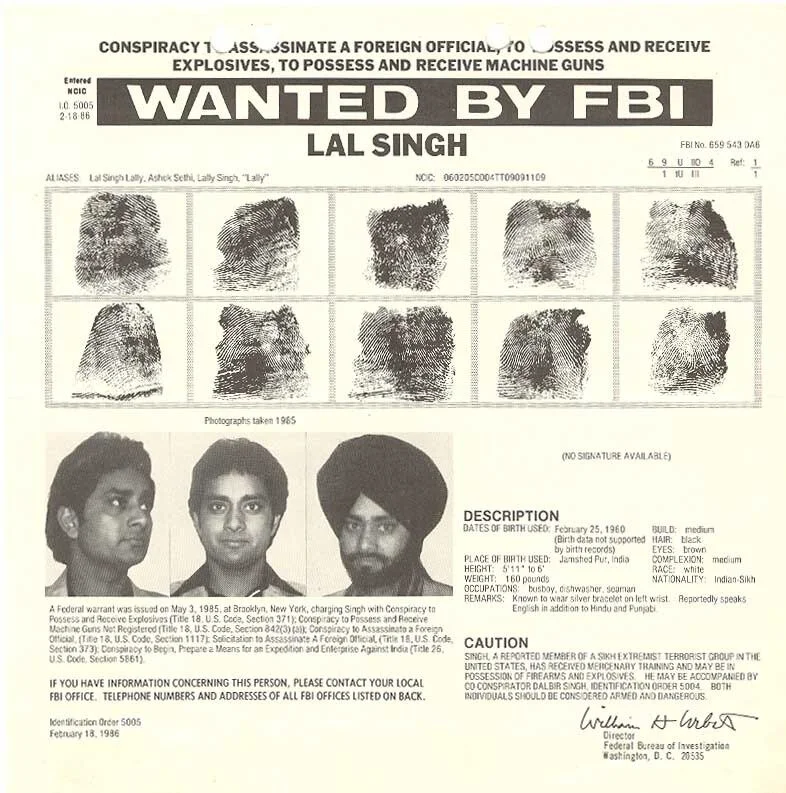


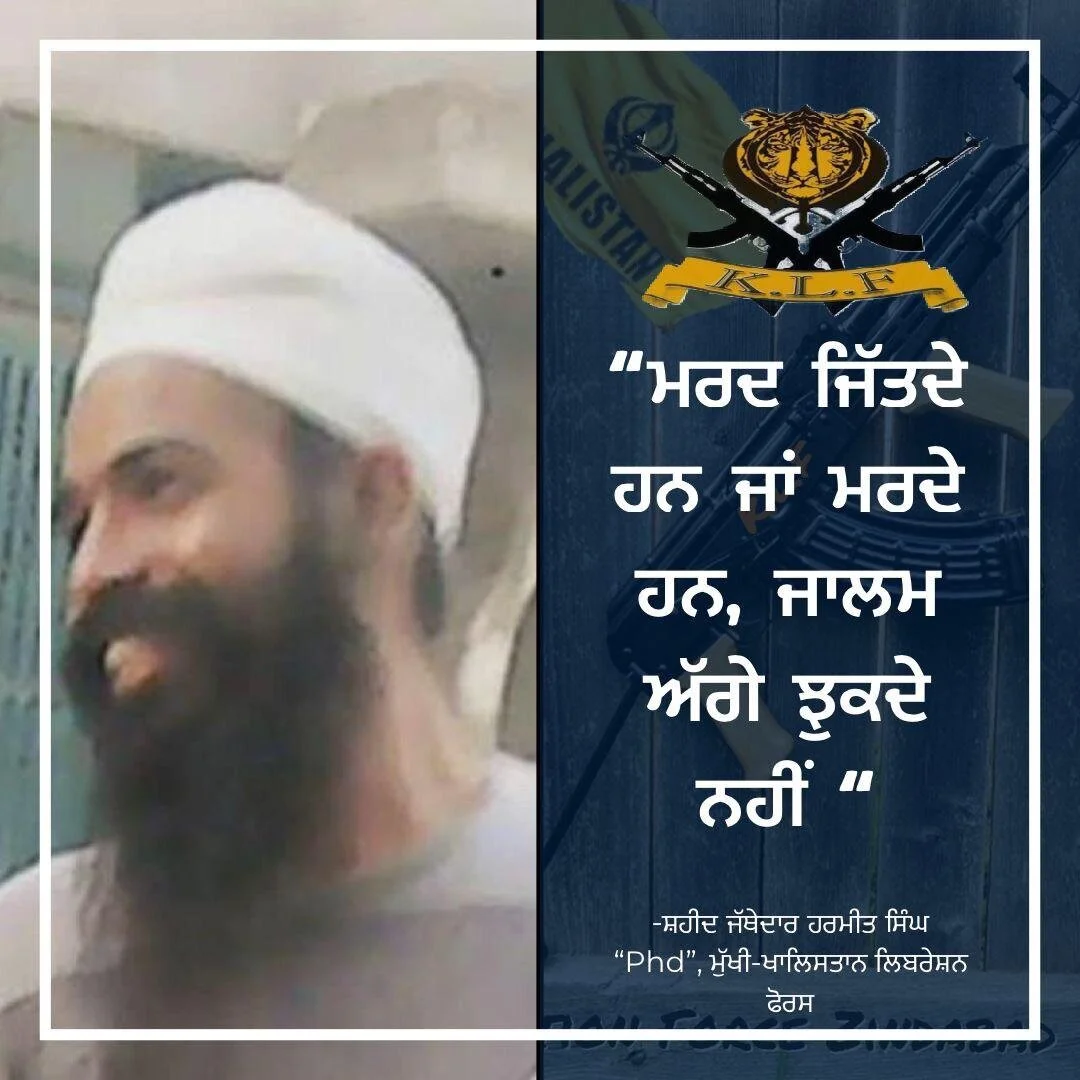




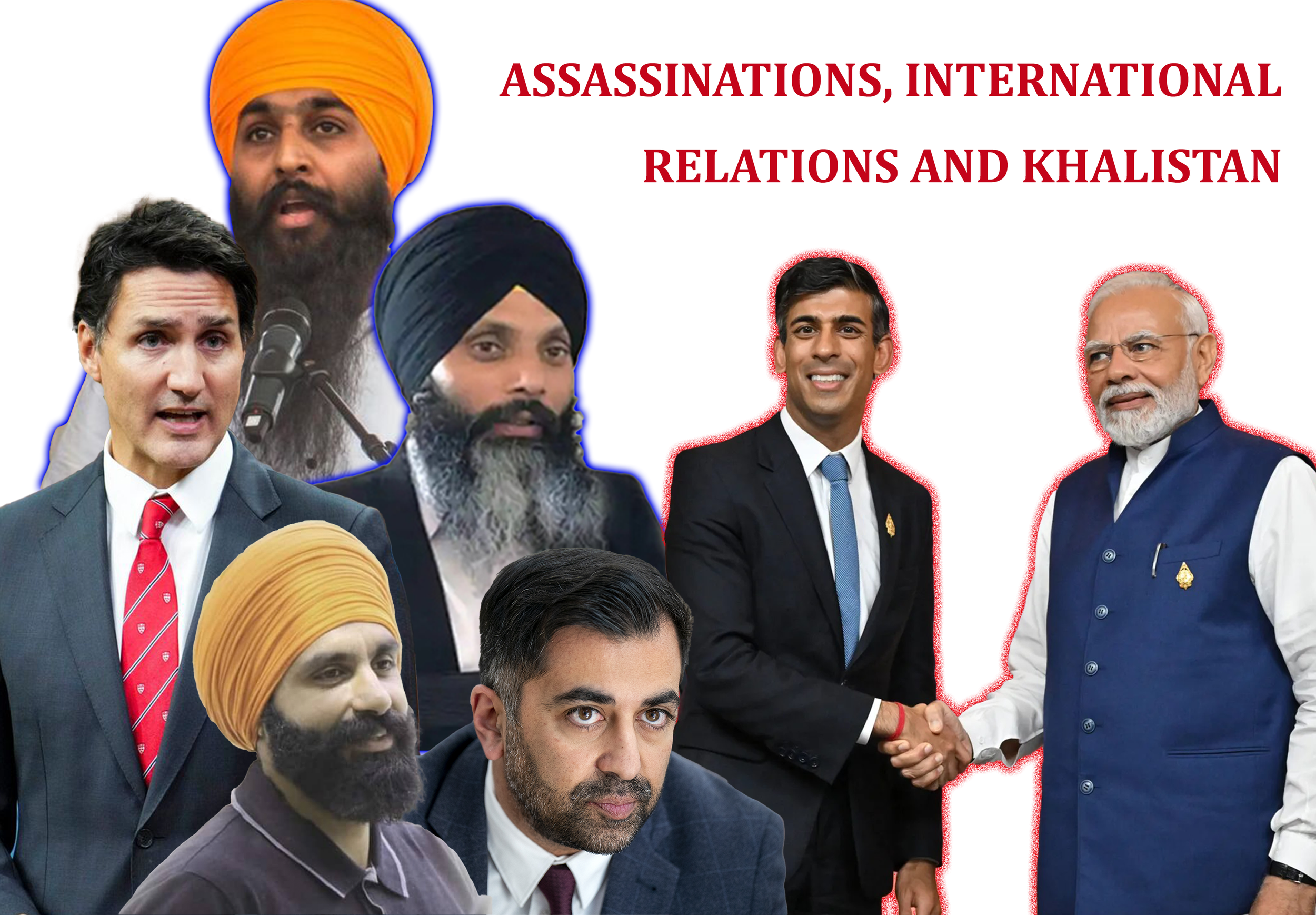
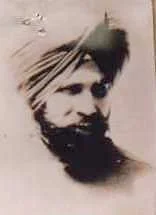
The UK government’s continued actions show that they are still trading bodies for gold. The Sikhs will continue to serve the Guru Panth, through their Dhan Man Thanh (body, mind, and wealth), and it is for Sikhs, and Sikhs alone, in the words of Shaheed Bhai Jaswant Singh Khalra, to decide “who is the terrorists and who is the righteous”.